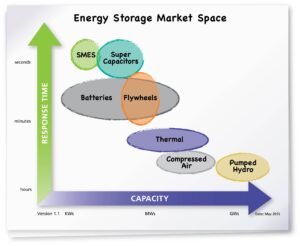 One of the most popular tools in the So what? who cares? why you? methodology is the category map. Using this tool, an innovator is able bridge the gap in understanding between the science and technology and the business opportunity an idea represents.
One of the most popular tools in the So what? who cares? why you? methodology is the category map. Using this tool, an innovator is able bridge the gap in understanding between the science and technology and the business opportunity an idea represents.
Here are five reasons why a well-constructed category map can become a founder’s “power tool” to articulate the opportunity for their idea to potential supporters.
#1 Get Clarity Early On: Taking a technical or scientific idea and mapping it visually inside a market landscape forces a shift in thinking for founders at the very early stages. With the help of this visual tool, founders can move away from detailed technical descriptions and start to consider different ways the problem is being solved today. The simple step of titling the map stimulates new thinking by founders as they contemplate their ideas from the 100,000-foot elevation.
#2 Think Broadly about Alternatives: Founders often believe that because an idea is novel and unique in their eyes, it has no competition. When founders begin to plot categories into a category map, it’s common to see just one or maybe two bubbles and a lot of white space. With a bit of pushing and probing by coaches, founders are able to brainstorm the alternatives for customers today – even if those are non-technology solutions. With the Category Map Tool as the framework, founders quickly begin to expand their thinking about the full range of solutions available to customers in a market space.
#3 Give the Market a Voice: In the process of building a category map, founders begin to explore questions from the view of the market, such as what major trends are causing the landscape to shift and open up new opportunities. Mapping the market space, founders can factor the voice of the market at the very early stages and wrap this insight around the attributes of their idea.
#4 Draft, Debate and Iterate: As a visual tool, the category map gives founders a way to crystallize their idea in a market context and investigate the impact of different innovation drivers and categories shaping the market space.  In a group coaching setting, the map stimulates debate and provides “coachable moments” for the founder to see that opportunities can exist across many different areas of the map – for example, a new idea that is going to mold and shape an existing category can be a very viable opportunity. Coaches can encourage founders to create multiple maps and describe them to colleagues, family members and even potential customers to validate their choices and strengthen their ability to communicate the opportunity.
In a group coaching setting, the map stimulates debate and provides “coachable moments” for the founder to see that opportunities can exist across many different areas of the map – for example, a new idea that is going to mold and shape an existing category can be a very viable opportunity. Coaches can encourage founders to create multiple maps and describe them to colleagues, family members and even potential customers to validate their choices and strengthen their ability to communicate the opportunity.
#5 Paint the Picture for Investors: Founders can use the Category Map to bridge the gap between the language of an investor and the language of the science or technology. They include the category map in investor pitches to engage investors in conversation about the opportunity for their ideas. Advisors can assist the founder to scope the specific opportunity, whether it’s to mold an existing category, extend, or converge categories – or to create a completely new category in the white space – and match founders with investors looking to invest in a specific stage of idea and opportunity.
Equipping your innovators with tools like this empowers them to engage in new and exciting conversations about the business value of their ideas. When innovators feel empowered and valued, it’s amazing what new ideas percolate.
Enjoy the journey!






